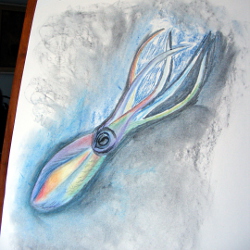
The Same
When I started out self-publishing, there was a lot of pressure to use covers that looked like the ones big publishers would use. What a terrible thing it would be if people noticed the book was self-published. They might think it was different in some way. Different is bad.
I’d often had my short work rejected for being too different, too weird, too unlike what we’ve published before, not the direction we’re going in, and many other ways of saying it’s just plain odd. This raised the question of whether I actually wanted a cover that looked like I was writing something I wasn’t. The stories were different and maybe that wasn’t a bad thing. The cover should surely reflect that.
It turned out that big publishers didn’t disagree. There were covers that stood out from the crowd as being different, because that’s how the book was being marketed. One that stuck with me was The Perks of Being a Wallflower, where the majority of the cover is a solid colour. There’s a small picture of someone’s legs and feet in the top corner. The text is pushed to the edges.
A lot of online critique means well, but without context about the book and the publisher, that cover would be slammed. The elements shouldn’t be at the edges. Make the picture fill the whole space. Look at covers in your genre, because they don’t look like that. Indeed, some versions of the cover are more typically laid out. But it’s the one with the tiny picture that I noticed.
The Different
People talk about professionalism and quality, as though they’re carved in stone and never subjective. This is usually the artistic equivalent of a generic business suit, as though that would be suitable for every job and situation.
The Garden Gang books were written and illustrated by Jayne Fisher. She was a child and you can tell that from the drawings. The pen lines are clearly visible where the characters are coloured in. These books are not bad, low quality or unprofessional. The art and writing is just right for them. They were also published by Ladybird Books, an imprint of Penguin Random House.
Yayoi Kusama dresses in bright polka dots. She’s an artist known for her work with patterns. There’s nothing unprofessional about that.
In a creative industry, there’s a very big range in what is acceptable. If it works, it works. Sometimes there’s no way to know if it will work without trying it.
The Unchoice
In the end, I didn’t really have a choice about doing my own covers. I couldn’t afford anything else. But thinking about these issues helped me break away from trying to make covers that looked like other people’s covers. I made covers that fit my books, with a focus on the styles I was best at doing. The result was people have bought my books based on the covers and I started selling art as well.
The one people most often talk about is Werecockroach, because I drew it in wax crayons. It was a bit of a dig at people who complain about self-published covers drawn in crayon, though it’s also a scene in the book. This has worked when I’ve run adverts, because it really stands out in a line of book covers (crayon covers are not actually the most common sort outside of jokes). It marks the book as being extremely self-published in a way some readers want.
The Twist
That hasn’t been the end of the story though. There’s a plot twist, because the issue of AI generated covers is at the forefront. Suddenly, it’s become an advantage to have a cover that doesn’t have a style that screams AI.
My humble crayon drawing is very difficult for AI to get right, because the AI is not one of Asimov’s robots. It copies things based on probabilities, with no understanding of how a tool might be used to create it. Smooth finishes are preferred over brush marks and sketchy wibbles where someone’s hand shook. Attempts to copy these things never look quite right. More like a digital filter put over the top.
I visited the Tate Modern’s exhibit on Matisse some years back. Viewing his cutouts up close, the pencil lines can be seen, along with the pin marks where the paper was held. It’s something AI is currently unable to accurately copy.
It’ll be interesting to see what this means for self-published covers. In a world where readers will increasingly judge anything that looks like it might be AI, and there’s no guarantee that hired cover artists will be honest, there’s a bigger push for self-published authors to make their own covers. An author might be better off with a cover that’s simply a nice typeface on a plain background.
The Future
For myself, it’s clear that I’m better off producing art by hand as much as possible. It’s going to be an advantage to show the sketchy lines and other marks, to the point of thinking of ways to make them more obvious. Embracing the imperfections that show thought behind them rather than being the result of mathematical mistakes.
There’s a sadness to this though. I like doing my own covers. It’ll be fun to see if more authors go that route. But I wish it wasn’t something that was forced and going to make it harder for artists who do cover art commissions.
Maybe the future will end up more balanced, but until then, it’s time to break out the pencils.